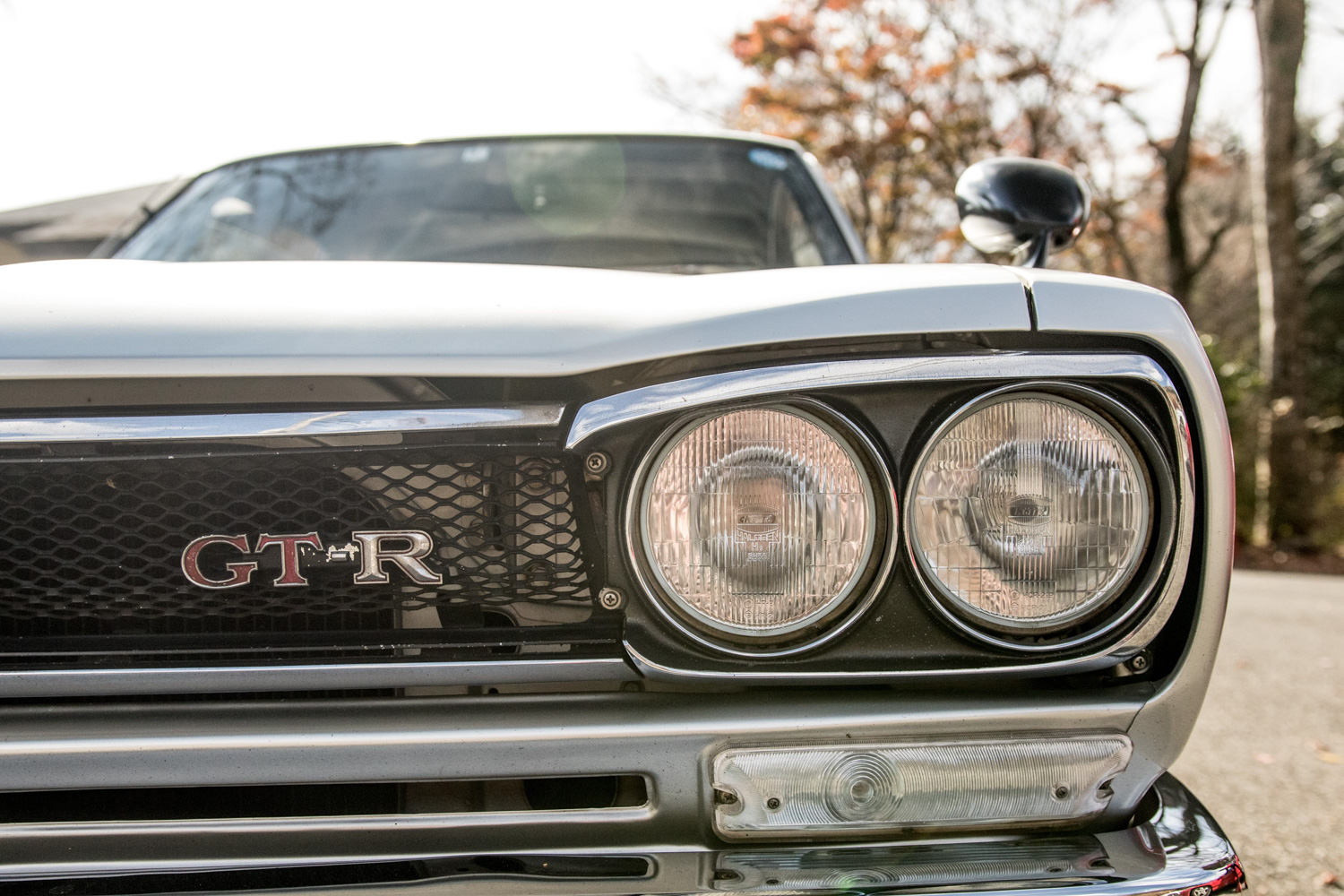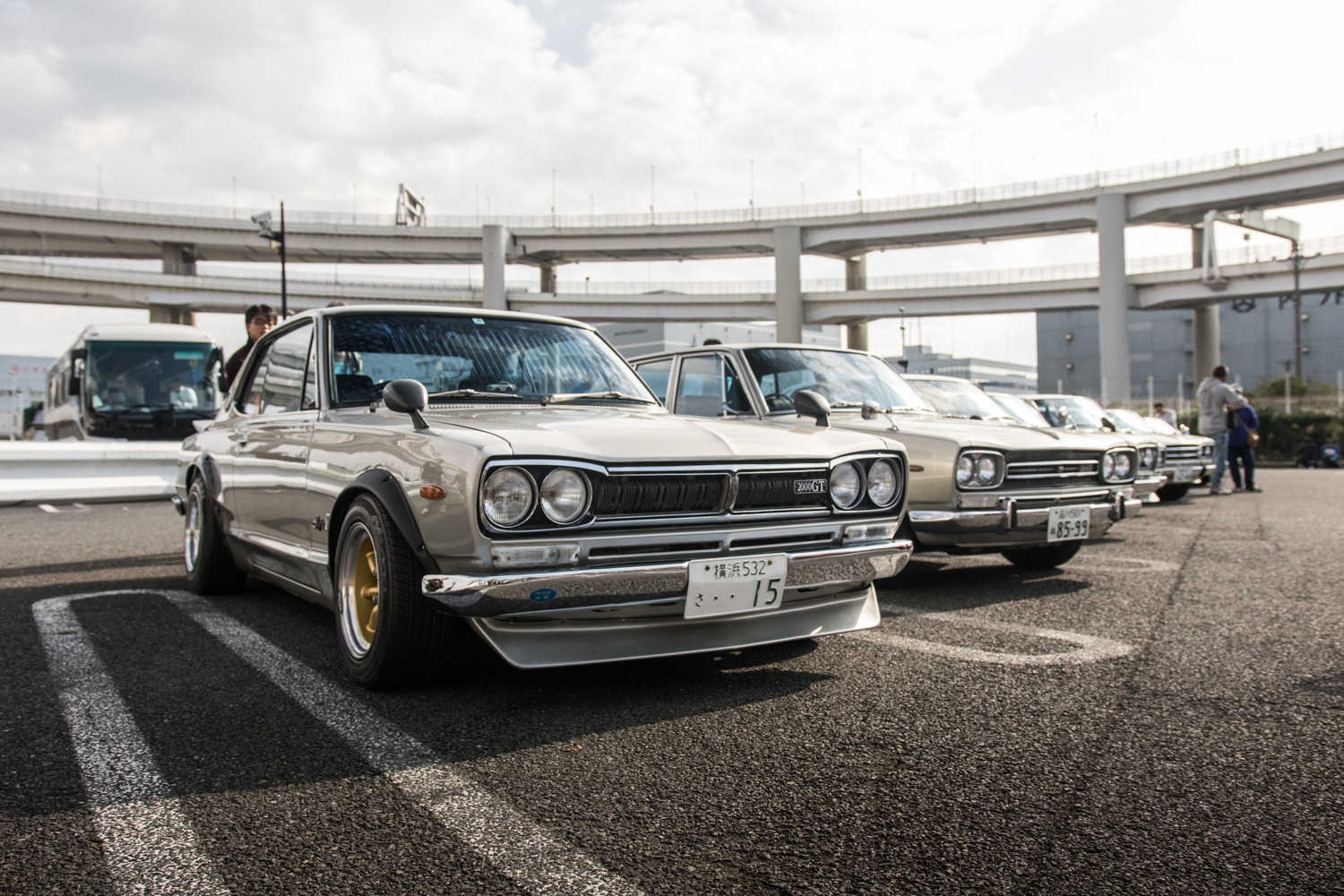Media | Articles
The Hakosuka Nissan Skyline GT-R was a legend well before it was named “Godzilla”
When the mighty twin-turbocharged R32 Nissan Skyline GT-R laid waste to a field of Fords and Holdens during its first foray into Australia, a local journalist dubbed the car Godzilla. The name stuck, and would become synonymous with the fire-breathing 2+2.
But the car’s reputation was established more than two decades before with a small, almost nondescript coupe that looked a bit like a boxy Nissan 240-Z and went like hell. Nissan’s engineers referred to the car by its internal chassis designation KPGC10, but true believers know it as Hakosuka. The name is a portmanteau of hako, meaning boxy, and suka, which is short for sukarain, the type of Japanese mountain road from which the car takes its name.
Which happens to be where I drove one.
But first, a little history for the uninitiated. Although Nissan introduced the Skyline at the 1969 Tokyo Motor Show, that car was a successor to a sedan of the same name built by Prince, an independent automaker that merged with Nissan in 1966. Prince was something of a premium manufacturer that offered the snappy little Prince and the larger, more powerful, more luxurious Gloria.
Marketplace
Buy and sell classics with confidence




The GT-R’s family tree starts with the Prince Skyline Sport built from 1957 until 1964. But things got really serious when Prince stretched a Skyline by eight inches, stuffed the Gloria’s 2.0-liter inline-six under the hood, and entered the 1964 Japanese Grand Prix. The car took second behind the then-new Porsche 904 GTS, which was in its own right a very successful mid-engine race car. (As it happens, the Prince was driven by Tetsu Ikuzawa, who would later become Porsche’s only Japanese factory driver.) Despite the Prince’s relative heft and crude engineering, Ikuzawa overtook the Porsche to lead the race for a spell, bringing the crowd to its feet and proving the Japanese could run with the best. Two years later, Prince took the win with the 200-horsepower mid-engined R380, a car powered by a great engine — literally, as the engine code was GR-8 — based on Skyline’s straight-six.
The victory so impressed Nissan that it brought most of the Prince’s racing engineers aboard, including Shin’ichiro Sakurai, the demanding engineer who led development of the Skyline. Nissan put him in charge of developing the Nissan Skyline GT-R sedan.
The small, boxy sedan that debuted in 1969 (the coupe came two years later) was powered by a 2.0-liter straight six based on the engine found in the R380. It featured double overhead cams and three Mikuni carburettors, made 160 horsepower, and sounded like heaven when you got on the gas. The car quickly proved itself a fierce competitor, winning 52 races—49 of them in succession—during its first three years of production.



It only took a little time on the mountain roads of Hakone to understand how the car became a legend. It’s not just the racing heritage, it’s the smell of oil and hot metal, the way the carbs honk under full throttle, the smoothness of the power. The driving experience is somewhere between nimble Datsun 510 and revvy 240Z and early BMW 6 Series, with the added experience of having nearly everyone you pass point and stare.
Clouds obscure Mount Fuji’s’s usually visible snow-capped peak as I thread the Skyline along a narrow single-track road. Given that I’m seated on the right side of the car and driving on the left half of the road, the experience feels a bit like piloting a Jaguar around some particularly leafy and uncharacteristically mountainous part of Britain, but the Skyline is no torque-rich E-type. Its small-displacement inline-six needs plenty of revs, which also yields a glorious-sounding intake howl from under the hood. The ultra-heavy steering is a workout for your forearms. Grip is decent thanks to a fully independent semi-trailing rear suspension, but the Skyline nevertheless takes focus to hustle along these narrow lanes.
The payoff of the car’s sound, sublime handling, and analog feel is worth the effort. The straight-six has a uniquely raspy tenor, the steering has the typical woolly imprecision of an old car but still provides feedback, and you feel every ripple of the pavement through the rigid suspension. Yet even in its old age, this GT-R feels potent.
Despite the car’s prodigious power, gorgeous styling, and racing success, the GT-R didn’t sell well. The oil embargo hurt high-revving sports cars as much as it did big-displacement muscle cars, and buyers tended to favor fuel-efficient compacts. The last one rolled off the line in 1973, and Nissan didn’t revive the model until introducing the R32 in 1989. The car has grown faster and more technologically sophisticated with every generation, and although they’re all known by the nickname Godzilla, the first deserves to be called something more: A legend.








